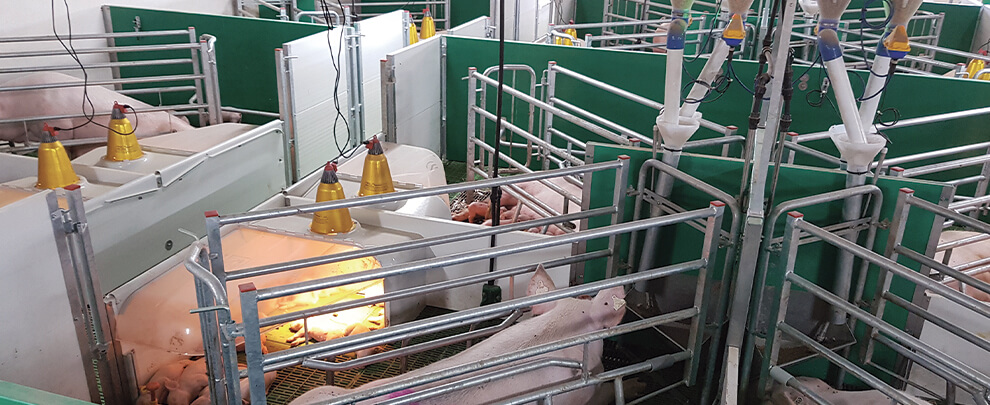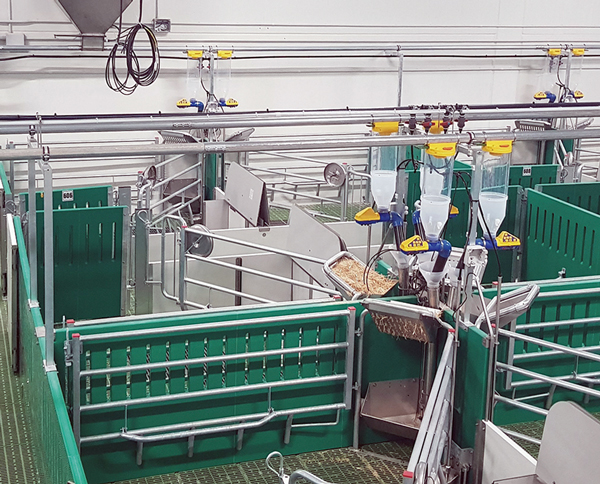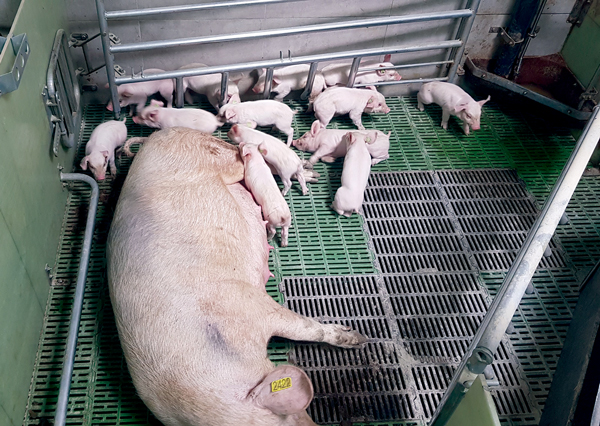Blog
Blog

Challenges to successfully face the change towards free maternity
13 of October of 22 - Studies
Josep Rius. Rotecna R+D Department.
Several European countries, such as Switzerland, Sweden and Norway, currently forbid the use of cages in farrowing pens. Austria will ban their use from 2033, although it will allow them during the critical survival period of piglets (minimum space of 5.5 m²). In Germany the permanent use of cages will be phased out and is planned to be banned by 2035 (minimum space 6.5 m²). In Denmark from October 18, 2022, Danish producers will be able to apply for the fund for the changeover of farrowing rooms with free sows or temporary restriction cages. Transformation to free lactation is due to be completed by the end of 2024. In the UK, 40% of lactating sows are housed in systems with outside access and the industry has declared a willingness to increase alternative indoor farrowing systems. In New Zealand, the high court declared that as of November 2020, cages in farrowing pens are illegal.
In October 2020, a committee of citizens from various countries of the European Union presented to the European Commission, a European Citizen Initiative (ICE), after collecting 1,397,113 citizen signatures in the 28 countries of the European Union. The initiative, which gets the name End the cages age, urges the Commission to ban the use of individual cages for sows, both lactation and gestation. New EU proposals for a new animal welfare law are expected by 2023.
The Commission intends to propose the gradual withdrawal, and finally, the prohibition, of the use of such cage systems, that in the case of pork production will affect its use in the period between weaning and mating, the first four weeks of gestation and in farrowing. The new legislation is expected to take effect in 2027 and provides for an immediate ban for new farms, with a phase-out period for existing ones, as has been done before when implementing similar restrictions.
Worldwide, however, most lactating sows are still confined in cages during the week before delivery and all lactation. From an economic point of view, this housing system has advantages such as saving space and handling time, ease of maintaining high levels of hygiene in the pen and a lower risk of crushing piglets. However, different studies have shown that farrowing cages negatively influence the sows' physiology and delivery behaviour, causing a stress response that can affect the duration of deliveries and the piglets' survival.
Sow stress reduction
Management measures related to the reduction of stress in the lactating sow can contribute to better farrowing and suckling dynamics. Oxytocin release is greater when the sows are relaxed. This hormone stimulates uterine contractions, promotes the expression of maternal behaviour and maximises milk excretion during the lactation period. Longer breastfeeding cycles have been associated with increased oxytocin levels and their relationship to lower levels of stress hormones, such as cortisol. In this sense, the control of the environmental temperature, the interventions, the noise, the adequate supply of water and food and the provision of nesting material are essential. Likewise, the measures that contribute to increasing the vitality of the piglet are of special importance, mainly with the decrease in the birth weight of piglets in hyper-prolific sows. Ensuring a correct encolostrum of the piglets, the equalisation of the litters considering the weight of the piglet in relation to the average weight of the litter and the appropriate temperature to avoid situations of hypothermia are crucial factors to highlight to improve the piglets' vitality.

Room with free farrowing and enrichment material. Photo: Rotecna.
Types of free farrowing indoors
- Temporary confinement: The sow can turn around, but her movements may be temporarily restricted around farrowing. The cage is usually used before and during delivery until a few days after delivery. The cage is then opened until weaning.
- Individual pens with zero confinement: The sow is housed individually in the pen and is not restricted at any time.
- Group systems: The sows and their litters are mixed before weaning. Most are based on a co-lactation system.
Challenges to their implementation
Undoubtedly, if sows are offered the opportunity to express their behavioural needs, their welfare levels increase substantially. However, their freedom to have space to move around in without being locked in a cage brings new challenges that will need to be successfully achieved so that their yield is not affected. Some of them are:
- Protection for piglets against the increased risk of crushing.
- Type of floor of the farrowing spaces.
- Farrowing pen design to optimise space.
- Provide manipulable material so that the sow can satisfy its need to build a nest (even partially).
- Management of the feeding system.
- Staff security.
- Management of conflicting sows (aggressive, passive or not very maternal, etc.).
- Hygiene of the pens and the sows.
All of them have their importance, but the main one is to protect the piglets. Various comparative studies of non-confinement or semi-confinement accommodation compared to cage systems show stillbirths increase with the former. The risk increases because the piglets are more exposed to being crushed by their mother. However, the system change implies some variations, especially in handling, that if applied with the rigour and with the help of the appropriate equipment, can contribute to reducing their negative impact.
Rotecna, with the innovative spirit at the service of the farmer who has always characterised it, in 2018 already collaborated with FAWEC (Production animal welfare education centre) of the Faculty of Veterinary Medicine of the Autonomous University of Barcelona in their project to test different models of free farrowing stalls by supplying their equipment. Afterwards, these models have been adapted to the different needs of farmers in many projects with free farrowing wards.

Image of a free farrowing. Photo: Rotecna.
NI-2 Corner and NI-2 Mobile
The nest and the care that can done with it are the key allies the farmer has to reduce the risk of increased piglet mortality. Piglets must learn to recognise their comfort space and shelter as soon as possible. Once they have colostrum, locking them for 20-30 minutes two or three times during the first day is enough for them to recognise the nest as a place of refuge and comfortable rest. They learn quickly if the temperature of the room and that of the nest are adequate. However, it should be noted that, in the opposite case, especially in places with hot climates or hot summers, their learning is negatively affected because the temperature differential between the room and the nest decreases, and the piglets do not go to the nest to rest, they do it anywhere else in the farrowing pen, thus increasing the risk of being stepped on or crushed. The solution in these cases would be to reduce the temperature of the pen as much as possible and adapt the temperature of the nest to the needs of the piglets, depending on their age and weight. In these circumstances, some farmers choose NI-2 Mobile for its versatility of use depending on the temperature needs of the animals.
Polypropylene and PVC panels
As already shown in the comparative study between polypropylene and concrete panels, polypropylene panels facilitate cleaning and disinfection tasks thanks to their smooth and non-porous surface, provide significant savings in labour, water and electricity consumption, reduce the production and transport of manure and, more importantly, a scenario where the reduction of antibiotics and food safety are essential requirements for the sustainable production of pork, polypropylene and PVC panels are a fundamental tool to prevent animal diseases.
Rotecna slats
Rotecna offers a wide variety of models and sizes of plastic and cast iron slats that provide for the needs of sows and piglets in farrowing, such as keeping animals clean and dry and providing them with the comfort without damaging the teats of the sows or the hooves of the piglets, ensuring a good grip.
Dositronic M
Besides all the advantages offered by electronic feeding in farrowing wards, Dositronic M offers the possibility to change or adjust any parameter without the need to enter the farrowing rooms using a PDA. Relevant aspect because the sows in freedom can show a higher level of aggressiveness than if locked in a cage. Thus avoiding any type of accident with caregivers and the assurance that the sow will continue to eat properly as planned, even if she is aggressive in protecting her litter.






